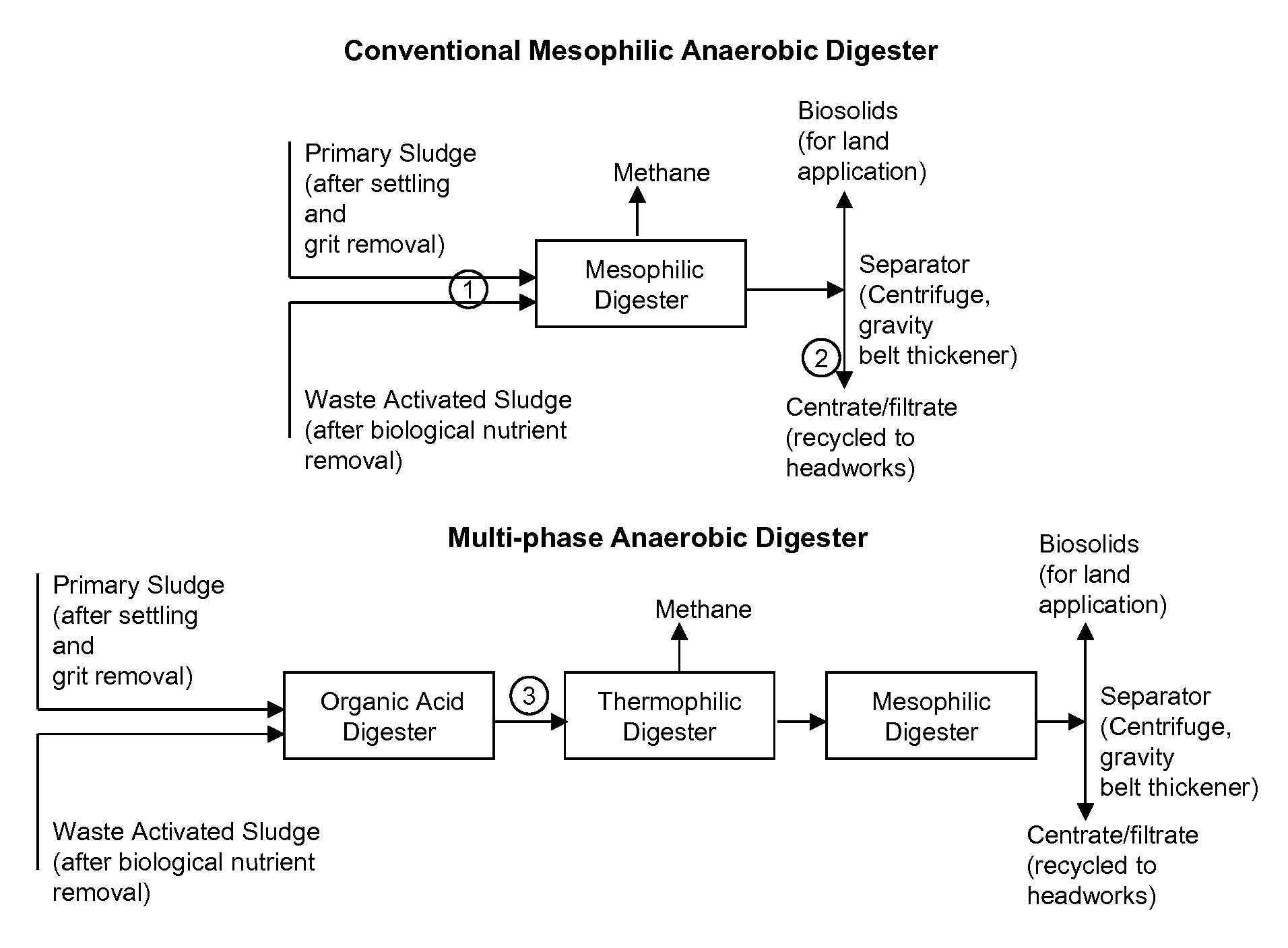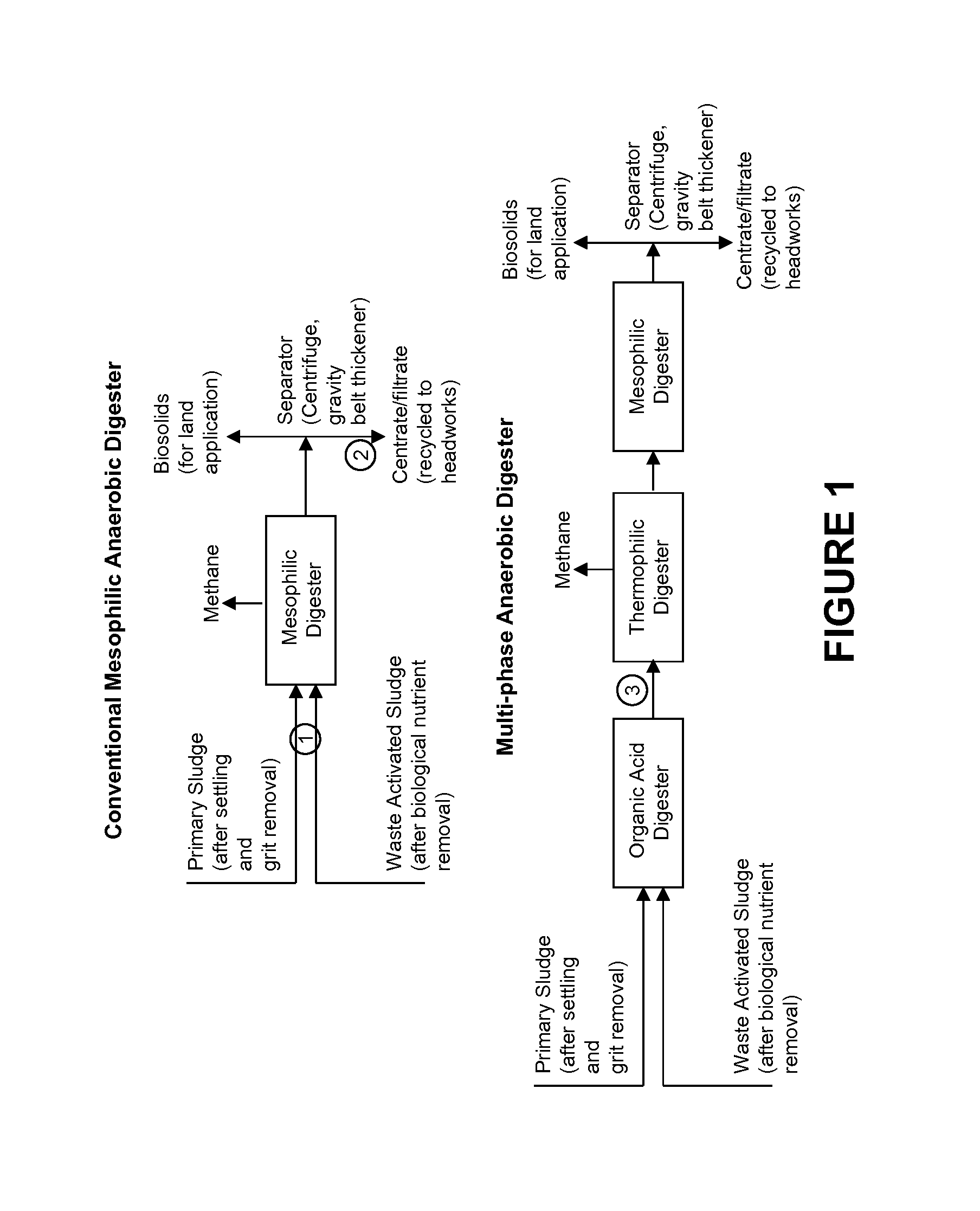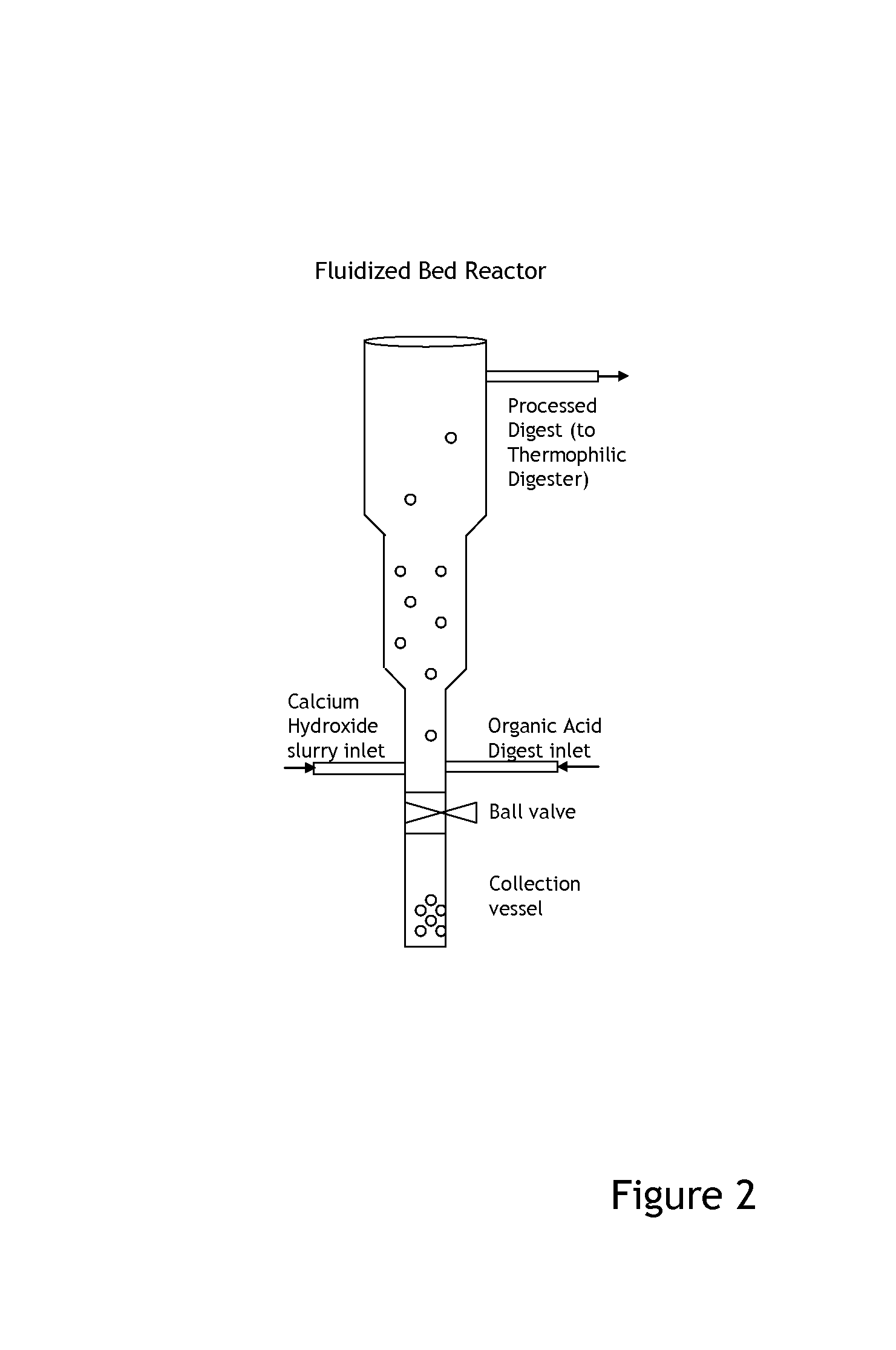Phosphate recovery from acid phase anaerobic digesters
a technology of acid phase anaerobic digesters and phosphate, which is applied in biological water/sewage treatment, multi-stage water/sewage treatment, filtration treatment, etc., can solve the problems of sewage treatment plants often facing nuisance formation, phosphorus added exceeds crop needs, and is difficult to remove and recover in recyclable form. , to achieve the effect of reducing the number of phosphates, and increasing the amount of phosphorus
- Summary
- Abstract
- Description
- Claims
- Application Information
AI Technical Summary
Benefits of technology
Problems solved by technology
Method used
Image
Examples
experimental example 1
[0027]In 2007, operators of the Nine Springs wastewater treatment plant, Madison Metropolitan Sewage District, Madison, Wis., replaced their single stage, mesophilic anaerobic digestion system with a multi-phase process and thereby separated the organic acid production from the biogas production, as is increasingly practiced in the U.S. (see US-EPA, 2006) and elsewhere. Large quantities of struvite were forming in the heat exchangers warming up the organic acid digest before entry into the thermophilic digesters and in the thermophilic digester itself, in the form of grit that sank to the bottom of the digester tank and restricted the effective volume of the digester.
[0028]On 8 Aug. 2007, 4-L samples were collected at the outflow of each of the digesters and the filtrate (FIG. 1) at the Nine Springs Wastewater Treatment Plant, Temperature and pH were measured immediately. Characterization of the soluble components by collection of dialyzate was begun immediately by placing dialysis ...
experimental example 2
[0040]The synthetic organic acid solutions used did not contain the microbial biomass of the original digest and its effects on phosphate removal by precipitation could not be predicted. Further, the work with the synthetic acid digest used centrifugation at 10,000×g for 20 minutes to separate supernatants and sediments, yet the observations using light microscopy showed typical particles sizes in the sediment that could have been separated by centrifugal forces and treatment times more friendly to the wastewater treatment plant than was used in the laboratory. Therefore, the effectiveness of calcined calcite in precipitating phosphate from the real organic acid digest from a working wastewater treatment plant was tested and the phosphorus precipitates identified.
[0041]On 14 Mar. 2008 and 29 May 2008, samples were collected at the outflow of the organic acid digester (‘Digester #7’) into the thermophilic digester at the Nine Springs wastewater treatment plant, Madison Metropolitan S...
PUM
| Property | Measurement | Unit |
|---|---|---|
| pH | aaaaa | aaaaa |
| concentrations | aaaaa | aaaaa |
| pH | aaaaa | aaaaa |
Abstract
Description
Claims
Application Information
 Login to View More
Login to View More - R&D
- Intellectual Property
- Life Sciences
- Materials
- Tech Scout
- Unparalleled Data Quality
- Higher Quality Content
- 60% Fewer Hallucinations
Browse by: Latest US Patents, China's latest patents, Technical Efficacy Thesaurus, Application Domain, Technology Topic, Popular Technical Reports.
© 2025 PatSnap. All rights reserved.Legal|Privacy policy|Modern Slavery Act Transparency Statement|Sitemap|About US| Contact US: help@patsnap.com



